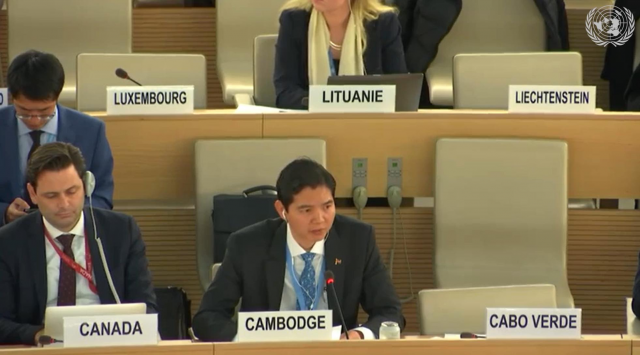Angkor Wat’s Causeway Bridge to Open in November

- By Sem Vanna
- October 1, 2023 3:00 PM
SIEM REAP – Angkor Wat temple causeway bridge, also known as Spean Harl, will be officially reopened in November after restoration since 2016.
Studies show the bridge has been partially submerged under the moat surrounding the temple and has been restored multiple times before, during and after the French colonial era.
During the latest restoration, a joint effort between the APSARA National Authority and Sophia University in Tokyo, a temporary floating bridge was installed south of the stone bridge for tourists to access the temple.
The restoration has used as many traditional techniques and as much materials as possible.
_1696128990.png)
Asked about the bridge handrail, Long Kosal, deputy director of the APSARA National Authority, said some form of barrier will be put to alert and make people feel more cautious when they approach the edge of the bridge.
“It is not just children, but older people too often lean toward the edge to contemplate what is out there,” Kosal said.
However, the barrier will not be installed in a way that compromises the ancient site's beauty.
“The decision whether to or not to keep the floating bridge is still in discussion. Regardless, we will try to keep this bridge as much as we can to ease stress on the stone bridge.
_1696129077.png)
Along the length of the bridge are quays on either side which can give people access to the water. Tourists will not be forbidden from accessing the water through the quays but they need to do so with responsibility and caution, Kosal said.
_1696129183.png)
Adorned by portions of Naga and Singha sculptures, the causeway bridge is one of the most prominent features of the approach to the temple.
At 190 metres long, 11.6 metres wide and 4 metres tall, the bridge was constructed from laterite stones above a layer of sandstone.
_1696129237.png)
Another prominent ancient bridge within the immediate vicinity is the Tonle Om gate of Angkor Thom walled city where tourists can see large statues of gods and demons engaging in a tug-of-war.
Interviewed by Sem Vanna for ThmeyThmey News, the article was translated by Ky Chamna for Cambodianess News.
To watch the interview in Khmer, click here.
Related contents: A Bridge that Links Not Just People, but Time















